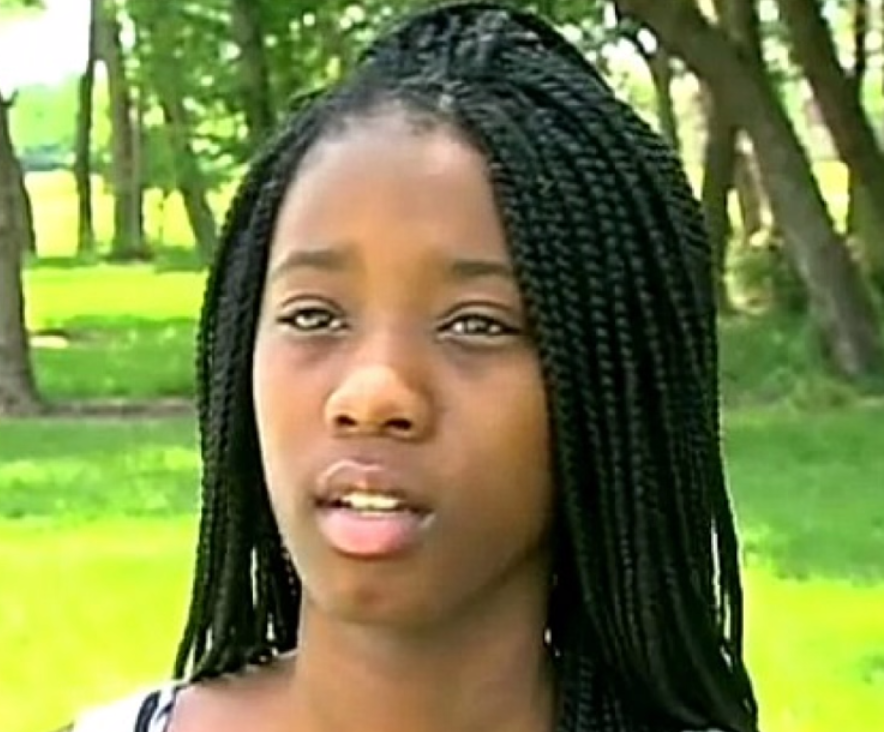*UPDATED* On #McKinney, the Bayou, and Beyonce: Where Graphic Fiction Meets Graphic Reality Meets Formation
February 7, 2016: This post has been updated to include visual commentary on Beyonce's latest video and song, Formation.
Before going in, first read Zandria's post We Slay, Part I. I have nothing more profound or theoretical to add here. Instead I want to show the chronology of my own readings of racial violence of black bodies in the south as told through, by, and about black girls and women. As the post explains below, each semester I assign Bayou to my graduate students at Columbia. Eight months ago, I composed this post to illustrate the similarities between the McKinney pool party incident and the graphic novel's depiction of racial violence against black girls in the deep south. I conclude the original post stating: "The Bayou is an echo of the present." Bayou also tells the story of the future. Since June of last year, more black women have died in police custody as the Movement for Black Lives intensifies.
Yesterday, Beyonce debut her most political rendition of the state of black lives in the U.S. I could go on about the imagery and symbolism presented in the video, as so many others have already done. Instead, however, I'm going to incorporate a few images from the video that adds to my previous visual analysis in efforts to raise more questions about the relationship between time, space, racial violence, and black women and girls' bodies.
We see both Lee's body and Dajerria Becton's body on the ground, forced there by the hand of a white male police officer. Then we see Beyonce's body laid out atop of a New Orleans police vehicle sinking into the remaining waters left behind by hurricane Katrina. Is it a sacrifice--a death, a homage?
Then we see the two girls, Lee and Dajerria, nearly split images of one another; a picture of a black girl animated on paper next to herself in physical form, both superimposed through digital media. Lee and Dajerria are subjects of our gaze. Are they helpless--vulnerable? Then appears Blue Ivy, Beyonce's daughter, hands on hips, afro puffed. She's looking down smiling at our gaze. Is Blue redemption--a child of destiny, of what's to come of black girlhood in the future?
I present a chronology of visual images here, although it's clear to me that chronology and dimensionality cannot contain black existence. In fact, our bodies, experiences, myths, and deaths transcend time and space. Lee foreshadows Dajerria who flashbacks to Lee. Both represent a sacrificial moment; a death in present time. Lee is Dajerria is Beyonce is Blue. Redemption is embodied through our daughters.
The post below originally appeared on June 10, 2015.
###
This semester I'm teaching a course at Teachers College, Columbia University on Culture, Media, and Education. As part of the course, students are assigned to read a graphic novel of their choice and asked to provide a multimodal analysis of the text.
I participated in the assignment with my students this week and chose to read for the first time Jeremy Love's graphic novel Bayou (2009). (Side note to grad students: Reading short fiction is a refreshing escape from the daily grind of dissertating. I highly recommend). I was initially drawn to Bayou a few weeks ago in preparation for the course because of the novel's use of imagery to illustrate critical social commentary and historicize issues of racial violence in the south. I've always been drawn to bayou stories. Having spent a good portion of my young adult life living in the south, I find myself always deeply affected by stories of the bayou.
I didn't realize, however, the significance of Love's story until last week after learning about the McKinney pool party incident. A seemingly unfathomable scenario in which a white male police officer drags to the ground and publicly humiliates a Black teenage girl named Dajerria Becton in a majority-white gated community of north Texas.
The officer has since resigned from the police force. Yet, images and video of the incident continue to spread across the Internet, graphically displaying familiar tensions between Black youth (particularly Black girls) and police officers.
McKinney and the Bayou are eerily similar. Both take place in southern towns confronting issues of racial violence at the hands of white neighbors and police officers. The two narratives depict graphic imagery and accounts of towns that have been plagued by racial segregation. A microcosmic tale of a nation branded by its long and deeply troubling history of racism.
Despite its colorful and cartoonish animations, Bayou is far from a childish tale. The novel's images evoke racial trauma of years passed that even to this day reemerge by way of sharable content and online viral imagery. Bayou is a story of desperation, hopelessness, fear, triumph, and courage; an all-American anecdote about a little Black girl whose survival solely depended upon being brave while living in a racially divided town and country.
The Bayou is an echo of the present.
Blue Ivy Carter
Love's Bayou, Vol. 2 (2011) is also available for purchase.








